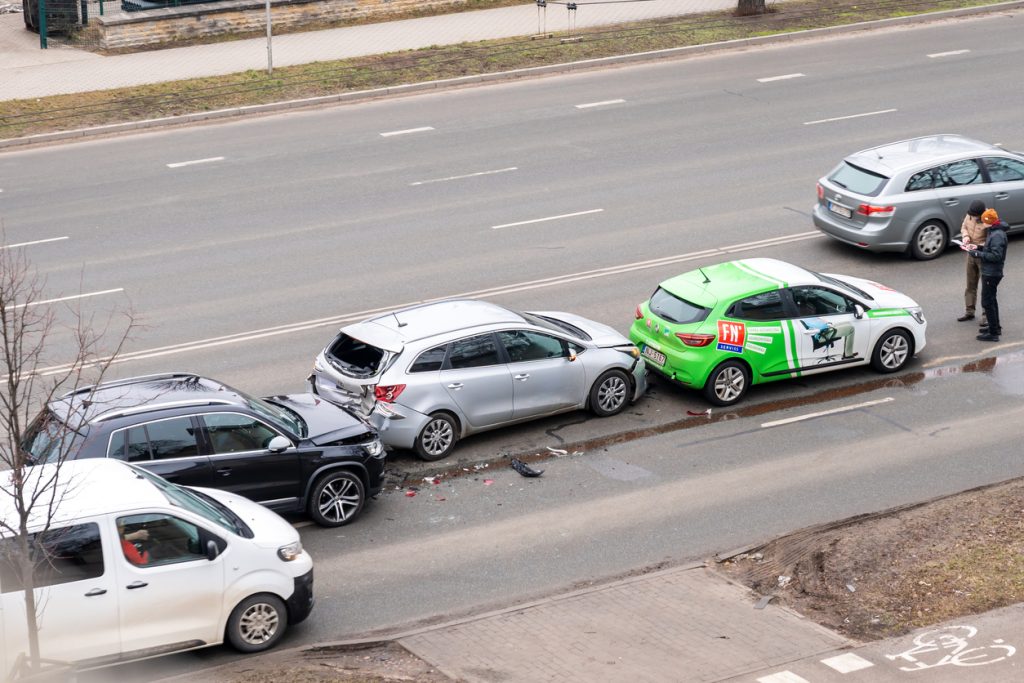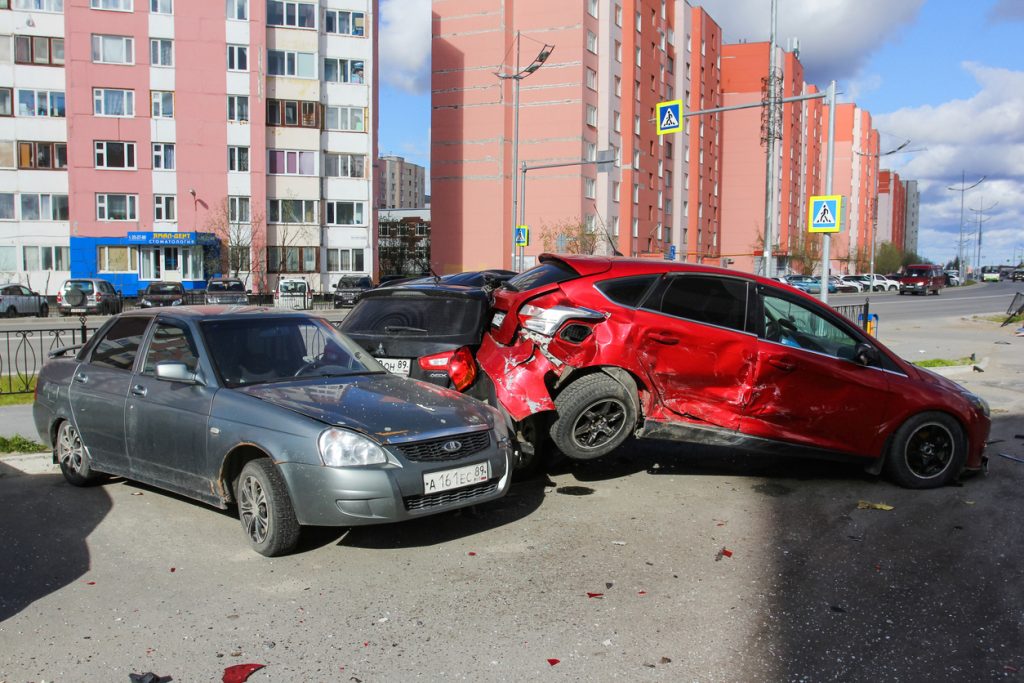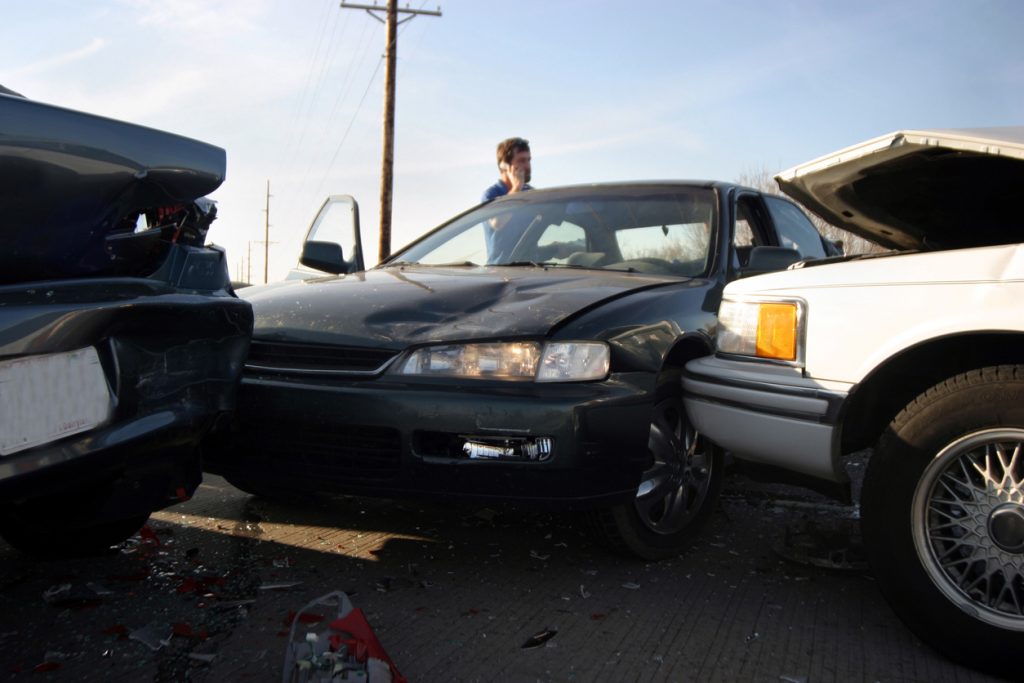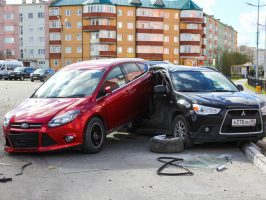An Oregon multi vehicle accident can turn a routine commute into a chaotic scene where responsibility is unclear and emotions run high. In collisions involving multiple drivers, accurate documentation of evidence often makes the difference between a fair settlement and a contested liability dispute. Understanding how to preserve proof immediately after such a crash is vital, not only for personal protection but also for the complex claims process that follows.
When vehicles collide in chain-reaction crashes or highway pileups, determining fault becomes more complicated than in a two-car collision. Each driver’s actions in the seconds before impact may play a role, and insurance companies rely heavily on the evidence gathered at the scene. Knowing what to do in the aftermath ensures that critical information is preserved before it disappears.
Why Evidence Matters in an Oregon Multi Vehicle Accident
In a Oregon multi vehicle accident, liability rarely rests on a single driver. Instead, fault is often divided among several motorists, each contributing to the chain of events. Insurance companies, attorneys, and sometimes courts analyze the evidence to reconstruct how the crash unfolded. If evidence is incomplete or mishandled, an injured driver may be unfairly blamed or denied compensation.
Evidence functions as the foundation for establishing negligence. Oregon follows a comparative negligence system, meaning each driver can be assigned a percentage of fault. Strong evidence helps ensure that fault is allocated fairly. A photo showing skid marks, for instance, may indicate a driver was speeding, while dashcam footage may confirm a sudden lane change triggered the sequence of impacts.
Initial Steps for Preserving Evidence After an Oregon Multi Vehicle Accident
Immediately after an Oregon multi vehicle accident, the priority is safety. Once medical emergencies are addressed, evidence collection becomes critical. Time-sensitive details such as weather, lighting, or road conditions can quickly change, altering the accuracy of later recollections.
Drivers should secure photographs of all vehicles from multiple angles, paying attention to damage points and debris fields. Contact details from witnesses should be gathered on the spot, as people may leave the scene before authorities arrive. A personal account recorded in real-time, even on a smartphone, often captures observations that may later fade from memory.
Oregon law requires reporting accidents resulting in injury, death, or significant property damage to the Department of Motor Vehicles. Submitting an accurate report aligns with statutory obligations and contributes to the official record. For guidance, the Oregon Department of Transportation provides resources on crash reporting procedures.

The Role of Police Reports in an Oregon Multi Vehicle Accident
Police reports play a central role in reconstructing an Oregon multi vehicle accident. When officers arrive at the scene, they document visible damage, interview drivers, and gather statements from witnesses. Their report typically includes diagrams of the crash scene, vehicle placements, and weather conditions.
Although a police report is not the final word on liability, insurers and courts treat it as an authoritative account. If discrepancies exist between personal evidence and the official record, a driver may challenge the report during the claims process. Maintaining independent documentation ensures that one’s perspective is not lost in the official narrative.
Photographs and Video Evidence in Oregon Multi Vehicle Accident Claims
One of the most powerful forms of evidence in an Oregon multi vehicle accident is visual documentation. Photographs and videos provide objective proof that cannot be altered by memory or perception. High-quality images of impact points, shattered glass, or skid marks can demonstrate the sequence of events more effectively than written statements alone.
Dashcams and traffic cameras increasingly contribute to accident reconstructions. A dashcam recording from one vehicle may capture the initial impact that triggered a chain reaction. In certain cases, nearby businesses with exterior surveillance systems may hold crucial footage, though these recordings often overwrite within days. Prompt requests for preservation are essential.
Witness Testimony in Oregon Multi Vehicle Accident Cases
Eyewitnesses bring a human perspective to an Oregon multi vehicle accident, offering details that may not appear in photographs or reports. A driver positioned two cars back may describe a vehicle running a red light, while a pedestrian could confirm whether headlights were on during low-visibility conditions.
Obtaining witness contact information at the scene is vital, as insurers frequently rely on neutral third-party accounts. Witnesses may also be subpoenaed in litigation if claims progress to court. Combining testimonial evidence with physical proof creates a more complete reconstruction of events.

Preserving Medical Evidence After an Oregon Multi Vehicle Accident
Documenting injuries is as important as documenting vehicle damage in an Oregon multi vehicle accident. Medical records, diagnostic imaging, and physician notes establish the link between the crash and resulting harm. Delays in seeking treatment can undermine a claim, as insurers may argue that injuries were unrelated to the collision.
Maintaining a journal of symptoms, recovery progress, and treatment milestones provides additional evidence of the crash’s impact on daily life. Photographs of visible injuries soon after the accident create a clear timeline, supporting medical testimony during claims or litigation.
Using Official Resources in Oregon Multi Vehicle Accident Claims
When responsibility is unclear in a Oregon multi vehicle accident, official resources provide valuable insight. Oregon state agencies outline reporting requirements and procedures that influence how evidence is processed. For example, the Department of Transportation maintains crash data and safety analysis reports, which may reveal whether a location is prone to multi-vehicle collisions due to design flaws or high traffic volumes.
Insurance companies also rely on statutory guidelines when evaluating claims. Understanding these requirements ensures compliance while strengthening the evidence file. Additional clarity on determining liability in complex accidents can be found in resources such as this discussion of which driver is responsible during an Oregon multi vehicle crash.
Digital Evidence and Technology in Oregon Multi Vehicle Accident Investigations
Modern technology increasingly shapes the way an Oregon multi vehicle accident is investigated. Many newer vehicles are equipped with electronic data recorders, sometimes referred to as “black boxes,” which capture speed, brake application, and steering angles seconds before impact. Accessing this data often requires legal steps, but it can provide definitive proof of a driver’s actions.
Cellphone records may also confirm whether a driver was texting or on a call at the moment of collision. Social media posts from involved parties, if made shortly after the incident, can inadvertently serve as evidence. Preserving digital evidence requires prompt action, as data can be deleted or overwritten quickly.
Challenges in Maintaining Evidence After an Oregon Multi Vehicle Accident
Despite best efforts, evidence from an Oregon multi vehicle accident can be lost or disputed. Vehicles may be moved before thorough photographs are taken, weather conditions can erase skid marks, and witnesses may become unavailable. Insurance companies may attempt to interpret evidence in ways that minimize their payout obligations.
To mitigate these challenges, timely action and careful organization are crucial. Creating a comprehensive file containing photographs, reports, witness details, and medical records strengthens one’s position during settlement negotiations. If disputes arise, this evidence may ultimately be presented in court, where its quality and completeness can significantly influence outcomes.

Conclusion: Protecting Your Rights After an Oregon Multi Vehicle Accident
The aftermath of an Oregon multi vehicle accident often feels overwhelming, yet the steps taken in those critical moments determine the strength of a future claim. Documenting the scene through photographs, securing witness accounts, preserving medical records, and complying with state reporting requirements all contribute to building a reliable body of evidence.
Multi-vehicle collisions demand precision in evidence collection because liability is often shared among several drivers. By understanding how to document proof effectively, injured parties position themselves for a fair evaluation of responsibility and compensation. In a state where chain-reaction crashes can involve dozens of vehicles, thorough documentation is not just recommended—it is essential for protecting legal rights.
